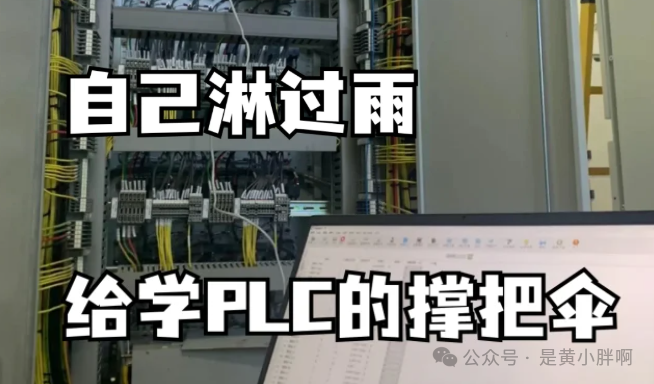
PLC Protocol Conversion: Designing Protocol Gateways to Break Down Barriers Between Different Standards!
Introduction
**Hello everyone!** Today we are going to explore a magical technology that allows industrial automation systems to “speak the same language” — PLC Protocol Conversion Gateways. Imagine, in your factory, there are PLC devices from different brands like Siemens, Mitsubishi, and Omron, which are like people speaking different dialects, making it difficult for them to communicate with each other.Don’t worry, the protocol gateway is that “universal translator” that enables these devices to work together seamlessly! **Want to know how this is achieved?** Join me as we unveil its mysteries!
Why is Protocol Conversion Necessary?
1. The “Chicken Talking to Duck” Situation in Industrial Sites
-
Red Alert: A car factory experienced a 2-hour shutdown because the Siemens PLC could not read data from the Mitsubishi inverter!
-
Blue Solution: The protocol gateway converts Modbus TCP to CC-Link protocol in real-time, immediately resolving the fault.
2. The Data Island Dilemma
In traditional factories, 45% of downtime is caused by communication failures between devices. It’s like a group of musicians playing different scores, while the protocol gateway is that conductor that allows all devices to play a harmonious symphony!
Three Core Capabilities of Protocol Gateways
| Capability | Traditional Method | Gateway Solution |
|——|———-|———-|
| Real-time Performance | Second-level delay | Millisecond response |
| Compatibility | 1-to-1 connection | Supports 20+ protocols |
| Security | Plaintext transmission | SSL/TLS encryption |
For example 🌰: A food factory reduced the cost of device interconnection by 70% by converting Profibus DP protocol to EtherNet/IP through a gateway!
Four Implementation Methods for Protocol Conversion
1. Hardware Gateway (Recommended for Beginners)
-
Plug-and-play devices, such as Hilscher’s netTAP gateway
-
Advantages: Built-in protocol library, supports hot-swapping
-
Typical Application: Converting DeviceNet to Profinet
2. Software Middleware (Suitable for IT Experts)
-
Cross-platform solutions based on OPC UA
-
Code Snippet:
def convert_protocol(source, target):
return f"Converting {source} protocol data to {target} format..."
3. Built-in Protocol Library of PLCs
-
Siemens S7-1500’s Open User Communication feature
-
Note: Requires additional purchase of protocol option package
4. Custom Parser (Ultimate Solution)
-
Developing a parser from Modbus ASCII to ASCII using C#
-
Warning: Requires precise message timing analysis
Case Study: The Tire Factory’s Comeback
Background:
-
Old molding machines using Mitsubishi FX series (RS485 interface)
-
New MES system requires Ethernet communication
Gateway Solution:
-
Deploying MOXA MGate5105 gateway
-
Configuring Modbus RTU to Modbus TCP rules
-
Setting up data mapping table:
| Register Address | Data Type | New System Variable Name |
|————|———-|————–|
| 40001 | float32 | Tire Pressure_Real Time Value |
Results:
-
No hardware modifications achieved device networking
-
Data collection speed increased by 8 times
-
Received the title of “Intelligent Transformation Benchmark” from the group
Pitfall Guide
⚠️ Three Deadly Traps:
-
Protocol Version Differences: The CRC check of Modbus TCP and Modbus RTU is completely different
-
Byte Order Issues: Siemens uses Big-endian, while Mitsubishi uses Little-endian
-
Timeout Settings: Improper retry mechanisms can lead to data storms
Professional Toolkit:
-
Wireshark industrial protocol plugins
-
Modbus Poll debugging software
-
Essential Red: Vendor protocol manuals (never trust Baidu!)
Future Trends: Smart Gateways
To be popular by 2025:
-
AI Protocol Self-Identification: Automatically matches the best conversion scheme
-
Digital Twin Mapping: Virtual gateways test configurations in advance
-
Blockchain Evidence: Ensures the communication process is tamper-proof
Interactive Time
-
What “protocol dialect” issues is your factory facing?
-
If you had a budget of 100,000, which gateway solution would you choose?
-
What is the most bizarre protocol compatibility issue you have encountered?
We look forward to your comments! 🚀
Conclusion
Remember: Protocol conversion is not the goal, but enabling data flow to create value is the ultimate objective!60% of Industry 4.0 projects get stuck at the communication layer, and a good protocol gateway is the universal key to open the door to smart factories.
See you next time! I will bring more exciting content on “PLC Security Protection: How to Block 99% of Cyber Attacks?” Stay tuned! 🔥
ShareSaveViewLike